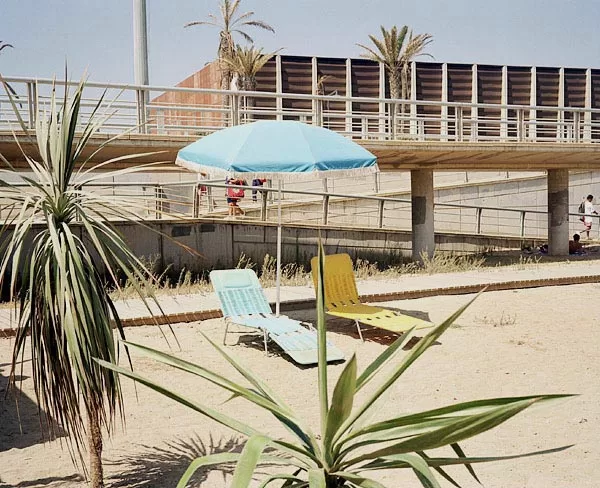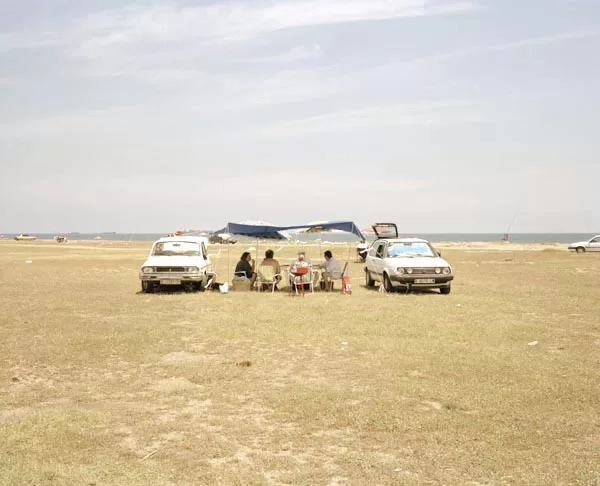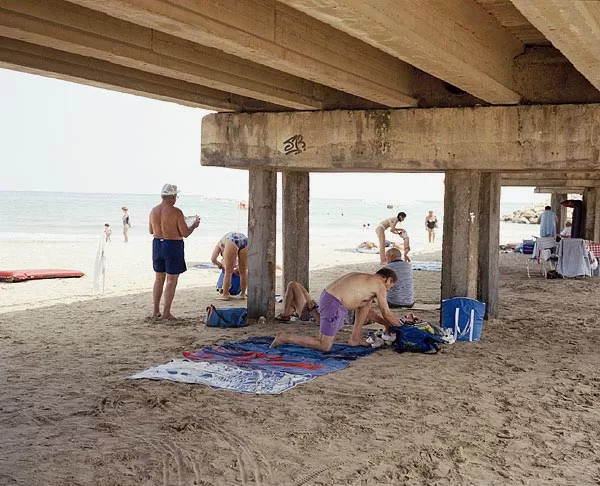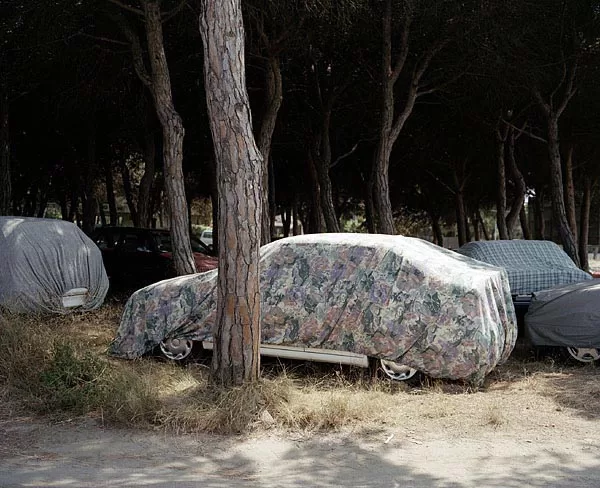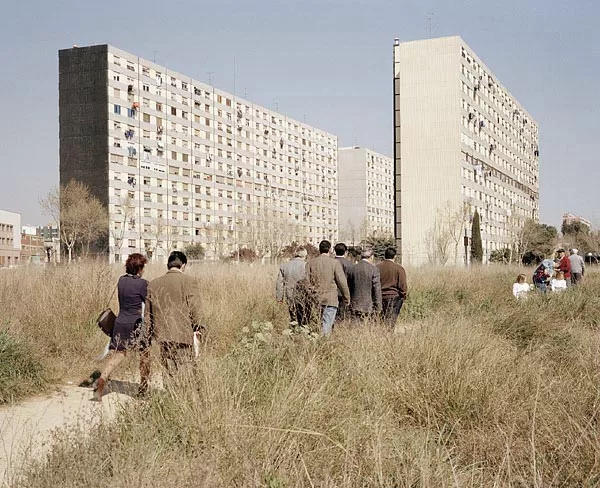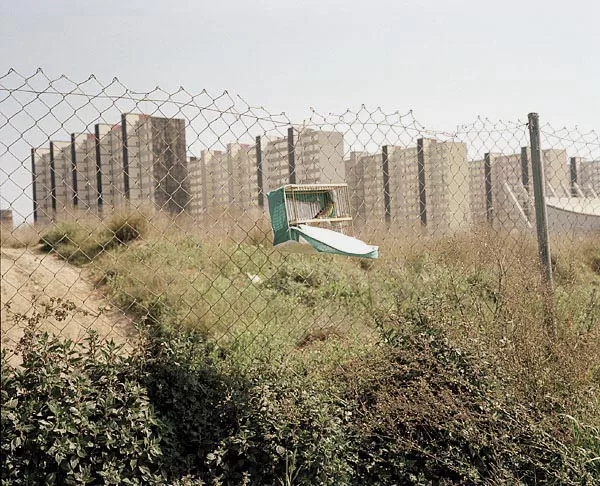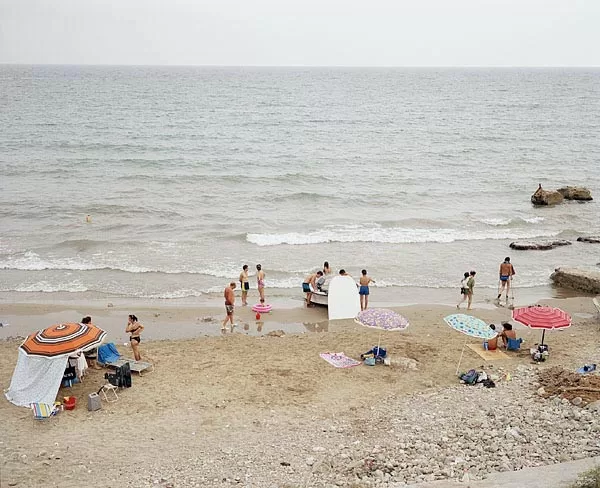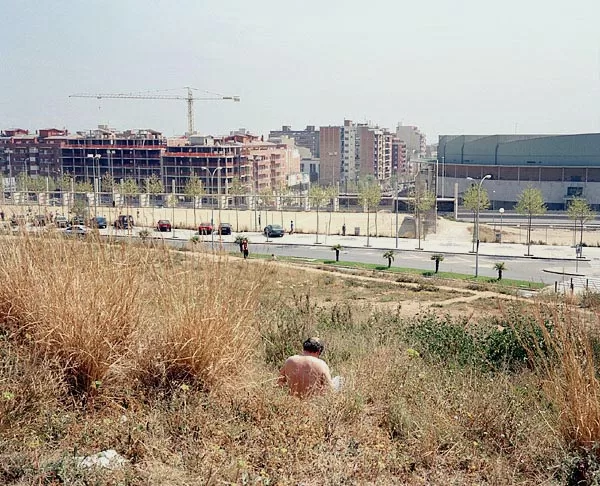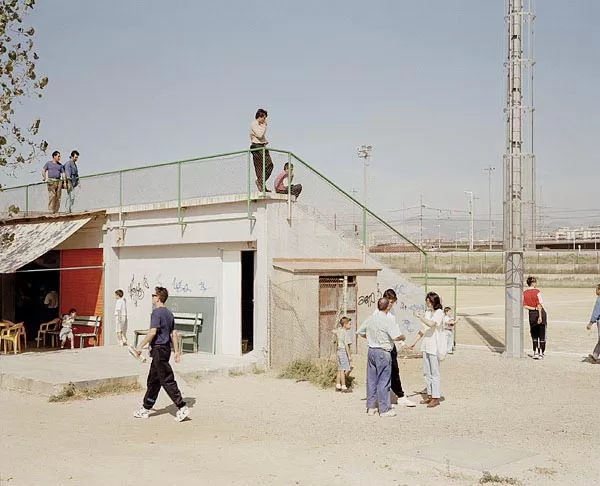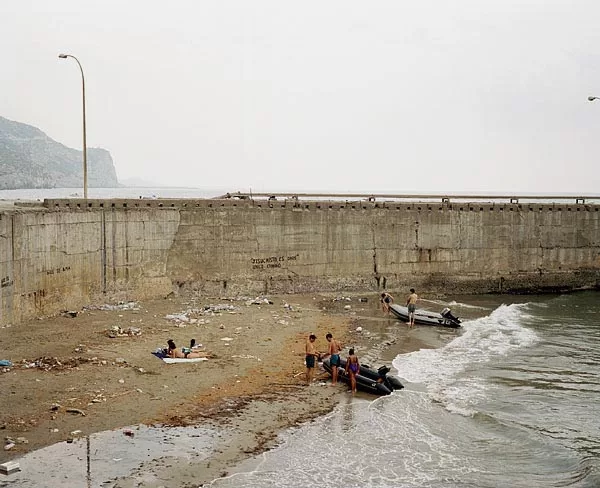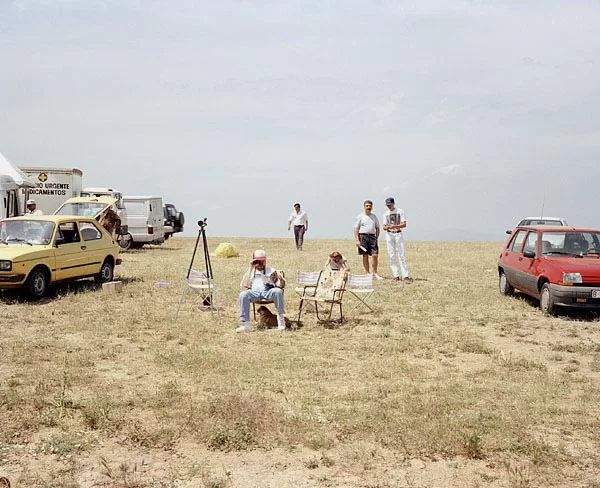Xavier Ribas – Sundays, 1994–1997
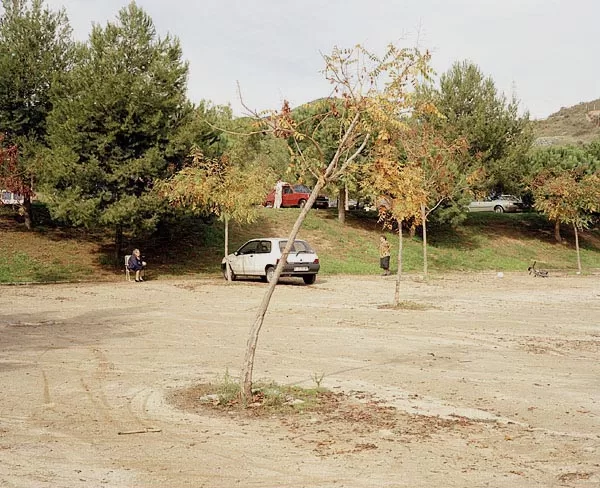
I am cautious about these photographs. Treading softly around the documents of leisure, they have formed part of my education. Displayed on the walls of the corridors of my college/school/university, I always stared in wonderment at the beauty of the print, and the overall edit online enlightened me further. It was the simplicity that brought me in.
Working in very ‘nowhere’ spaces, Xavier Ribas‘ series Sundays, 1994-1997, covers the ground that people populate unconventionally. They are in-between spaces amongst motorways, paths and car parks, forming a cut away from society. People escape to these environs temporarily for moments of leisure, despite the tatty surroundings. They find solace in forgotten land.
The pictures are constantly negating another place as each photograph is always looking to move on. The spaces have a temporary status; slithers of beaches are occupied, space is defined as personal. Overlapping mats create a general community through shared spaces, with everyone occupying the land in unison, pleasantly engaging as the day drifts by.
Stillness is often an adjective attached to photographs, it is a quality that the photograph relies on. For each floral pattern a place in time is held and context brings us back to the present. Time is not moving anymore; people live in the images as hours pass. The experience ends up being limitless, never reaching a conclusion. The series manages to find itself in a period of time immediately identifiable; it cocoons every element of the photograph: the clothing, colours, and structures.
As the day passes the inhabitants follow suit. They pick up their bags, coats and umbrellas and make the walk to their covered cars. The path paves way as flocks of people enter the last stage of the day – the journey home. And this simple process is perhaps one of the easiest concepts to grasp, allowing us to think about the moments spent in both redundant and newly used spaces.
When people leave, the spaces are disregarded – now useless. Their purpose comes into question as they wait patiently for the next time they are put into practice. For these spaces are neglected and crave human attention. They rely on resting frames and limbs on their cold, reliable surface and they seek the attention of passers-by. The very act is heartwarming. For these spaces are designed by us and rely on us to keep them alive. They serve us as structures.
There is something effortless about Xavier’s approach, his method more akin to a snapshot of thought than a mechanical activity. Time is limitless as the path he takes to process his thoughts is not even considered – he follows his nose.
To return to a photographic crush, these images have intrigued me for years. They have waltzed in my mind and have pushed me forward in my thought process as a photographer throughout my time in education. It is funny that photographs can have an affect on your perspective, especially when they are not from a personal archive. Their craft stirs the senses and effortlessly seduces us as photographers and spectators. They move us in the simplest way.
